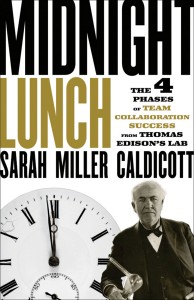
Blog readers please note: I am routinely posting content from one of the most innovative content sources in the church world: SUMS Remix Book Summaries for church leaders. SUMS Remix takes a practical problem in the church and looks at it with three solutions with each solution taken from a different book. As a church leader you get to scan relevant books based on practical tools and solutions to real ministry problems, not just by the cover of the book. Each post will have the edition number which shows the year and what number it is in the overall sequence. (SUMS Remix provides 26 editions per year, delivered every other week to your inbox).
>You can purchase a subscription to SUMS Remix here >>>
Divisions are necessary in all organizations, even churches. They provide the structure that allows your ministry to function smoothly. Every organization is divided into divisions, functions, or some type of grouping. Doing so allows each group to develop the special skill sets needed to make it function.
But when departments or functional areas become isolated from one another it causes problems – the same structural benefits also prevent the flow of information, focus, and control outward. In order for an organization to work efficiently, decisions need to be made across silos, but problems arise when:
Key leaders only think about their ministry area and not the entire organization.
Solution #3: Rewire teams and process for maximum collaboration. THE QUICK SUMMARY
THE QUICK SUMMARY
Thomas Edison created multi-billion dollar industries that still exist today. What many people don't realize is that his innovations were generated through focused approaches to teamwork and collaboration.
Authored by the great grandniece of Thomas Edison, Midnight Lunch provides an intriguing look at how to use Edison's collaboration methods to strengthen live and virtual teams today.
A SIMPLE SOLUTION
A church accomplishing its mission requires many people working on multiple teams to be successful. Often, these teams drift into a pattern of accomplishing things “their way,” erroneously thinking that what’s best for their team will be best for the organization as a whole.
This lack of coordinated decision making across the organization is the third indicator of silos in the organization.
True collaboration operates like an invisible glue that fuses learning, insight, purpose, complexity, and results together in one continuous effort.
Thomas Edison viewed true collaboration among his teams as a value creation continuum, recognizing that complexity was a norm that all team members needed to understand and address. Here is a four-phase model of the collaboration process that translates Edison’s decades of groundbreaking practices into language for the 21st Century leader. A core question serves as a launching point for the exploration of each phase.
> How do we create the foundation for true collaboration to flourish?
Phase 1 – Capacity: Select small, diverse teams of two to eight people who will thrive in an environment of discovery learning and collegiality.
> How can our collaboration team reframe the problem at hand, driving the greatest range of creativity and breakthrough solutions?
Phase 2 – Context: Focus the outlook of the team toward development of new context that broadly frames the problem or challenge under consideration. Use a combination of individual learning plus hands-on activities to drive perspectives for potential solutions.
> Can the collaboration team stay the course and continue forward despite disagreements?
Phase 3 – Coherence: Maintain collaboration momentum, creating frameworks for progress through inspiration and inspirational leadership even though disagreements may exist. Newly discover, or re-emphasize, the shared purpose that binds the team together.
> How can our collaboration team leverage internal and external networked resources nimbly and with speed?
Phase 4 – Complexity: Equip and reskill teams to implement new ideas or new solutions using internally and externally networked resources, rapidly accessing or managing complex data streams the team must navigate. Leave a footprint that contributes to a broader collective intelligence.
Sarah Miller Caldicott, Midnight Lunch
A NEXT STEP
Church leadership teams aren’t working to invent the next light bulb, but Edison’s Four Collaboration Phases can be instructive for leaders who want to break down silos on their teams.
Within the four phases of capacity, context, coherence, and complexity lies the invisible glue that can help your organization develop true collaboration practices to achieve your mission.
Phase 1 – Capacity
Create your own “midnight lunch” experience by ordering pizza or other takeout food. Pick a unique place in your normal environment that is not normally associated with regular tasks, or go offsite. Use the informal atmosphere to foster conversations about interest areas of all your group members. Actively listen to the conversations, and develop a deeper level of knowledge - and connection – with your teammates.
Phase 2 – Context
As a team, take 10 minutes and create an individual list of the various sources of information you draw from each week. Does your team see a pattern in their lists? Now challenge them to create another list of five additional sources that will intentionally shift the context of their information-gathering. During weekly meetings, take five minutes to share how this new context is broadening their ministry context.
Phase 3 – Coherence
When team members begin to use self-referencing language (I, me, mine) more than team-referencing language (us, our, ours), it is an indicator that defenses are being raised and the team is in danger of losing coherence. Often, the language of the team is the first indicator of a team losing its momentum toward a shared goal. Lead your team to be constantly aware of their language, and guide them to practice inclusive language by first modeling it yourself.
Phase 4 – Complexity
Among all organizations, the church has the most potential for the existence of excessive hierarchy. To overcome this, lead your team to clear away internal roadblocks which add unnecessary time and complexity to your process. The use of the strategy map process above can be both a beginning point and continual guide to your journey toward simplification.
Taken from SUMS Remix 1.9, published March 2015
>>You can purchase a subscription to SUMS Remix here >>>
